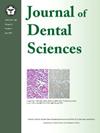Evaluation of the accuracy, occlusal contact and clinical applications of zirconia crowns using artificial intelligence design versus human design
IF 3.1
3区 医学
Q1 DENTISTRY, ORAL SURGERY & MEDICINE
引用次数: 0
Abstract
Background/purpose
The uniqueness of human teeth necessitated that dental restorations be customized primarily through extensive manual labor. Therefore, this study explored the potential of AI designed dental restorations for clinical applications.
Materials and methods
Digital artificial design and AI design crown restorations were replicated 10 times, for a total of 20 samples. The zirconia crown restoration was completed by strengthening and glazing according to standard clinical procedures. Samples were digitally archived using a dental scanner to assess reproducibility, precision, and occlusion. The human trial portion included natural tooth preparations by clinical standards. Three participants each designed two crowns, resulting in a total of six crowns. Dental x-rays were used for image evaluation.
Results
The 3D accuracy showed that stereolithography (STL) and scan files of the AI design group were 3.4 and 6.6 times lower than the digital group, respectively (P < 0.05). The space of the occlusal surface of the AI-designed crown was 1.8-times higher than that of the digital design (P < 0.05). Intraoral optical images demonstrated that the AI designed crown closely resembled the human-designed counterpart in appearance. Comparison of color distribution showed more differences on the buccal and lingual sides between the two design patterns.
Conclusion
Clinical images indicate that the shape, precision, and space of AI designed crowns are comparable to those of digitally designed crowns. Despite the spatial differences in contact between AI designed and digitally designed crowns, the in vivo and in vitro test results demonstrated favorable realism and contact quality.
人工智能设计与人工设计的氧化锆冠的准确性、咬合接触及临床应用评价
背景/目的人类牙齿的独特性使得牙齿修复主要通过大量的手工劳动来定制。因此,本研究探索了人工智能设计的牙科修复体在临床应用中的潜力。材料与方法数字人工设计和人工智能设计冠修复体复制10次,共20个样本。根据标准临床程序,通过强化和上釉完成氧化锆冠修复。使用牙科扫描仪对样本进行数字化存档,以评估再现性、精确度和咬合。人体试验部分包括按临床标准制备的天然牙齿。三位参与者每人设计了两个皇冠,总共设计了六个皇冠。牙科x光片用于图像评估。结果三维精度显示,人工智能设计组的立体光刻(STL)和扫描文件分别比数字组低3.4倍和6.6倍(P <;0.05)。人工智能设计的冠的咬合面空间是数字设计的1.8倍(P <;0.05)。口腔内光学图像显示,人工智能设计的冠在外观上与人类设计的冠非常相似。对比两种图案在颊侧和舌侧的颜色分布差异较大。结论人工智能冠的形状、精度和间距与数字冠相当。尽管人工智能设计的冠与数字设计的冠在接触空间上存在差异,但体内和体外试验结果均显示出良好的真实感和接触质量。
本文章由计算机程序翻译,如有差异,请以英文原文为准。
求助全文
约1分钟内获得全文
求助全文
来源期刊

Journal of Dental Sciences
医学-牙科与口腔外科
CiteScore
5.10
自引率
14.30%
发文量
348
审稿时长
6 days
期刊介绍:
he Journal of Dental Sciences (JDS), published quarterly, is the official and open access publication of the Association for Dental Sciences of the Republic of China (ADS-ROC). The precedent journal of the JDS is the Chinese Dental Journal (CDJ) which had already been covered by MEDLINE in 1988. As the CDJ continued to prove its importance in the region, the ADS-ROC decided to move to the international community by publishing an English journal. Hence, the birth of the JDS in 2006. The JDS is indexed in the SCI Expanded since 2008. It is also indexed in Scopus, and EMCare, ScienceDirect, SIIC Data Bases.
The topics covered by the JDS include all fields of basic and clinical dentistry. Some manuscripts focusing on the study of certain endemic diseases such as dental caries and periodontal diseases in particular regions of any country as well as oral pre-cancers, oral cancers, and oral submucous fibrosis related to betel nut chewing habit are also considered for publication. Besides, the JDS also publishes articles about the efficacy of a new treatment modality on oral verrucous hyperplasia or early oral squamous cell carcinoma.
 求助内容:
求助内容: 应助结果提醒方式:
应助结果提醒方式:


